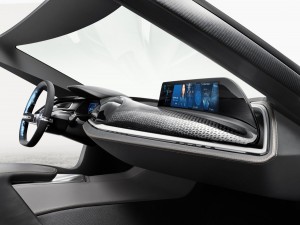Does Connected-Car Technology Add to Driver Distraction, or Help Protect From It?
Jennifer van der Kleut
As connected-car features rise in popularity among car buyers, some are questioning whether more connectivity features are providing worse driver distractions, or whether added technology could actually help protect us from distractions.
As The Globe and Mail points out, “The commute to work is getting almost as complicated as flying an airplane – many higher-end cars even have more computing power than a commercial jet.”
With larger dashboard displays, in-car infotainment systems like Apple CarPlay and Android Auto looming on the horizon, and even cars with their own WiFi signals hitting the market, the possibilities are endless when it comes to what you can do in your car.
ITWeb predicts that the number of connected cars on the road will reach 150 million this year, which spells big business for telecommunications companies.
But, is that good news? Driver distraction is still a very real problem, leading to numerous car crashes, injuries and fatalities on roads every day. Are connected cars adding to that?
As The Verge pointed out in 2014, the ideal scenario would be that “your car would drive itself while you and your passengers spend the entire trip fiddling with apps and using precious wireless data. But since self-driving cars are still at least six years from hitting the road, companies must balance the desire to do more things with your car and the need to keep your focus on driving.”
The Verge applauded some companies that put an extra safety measures in their apps that prevent them from working when a car is in motion, such as Ford’s Sync.
Other companies argue that, conversely, connected-car and semi-autonomous drive features are the key to minimizing driver distractions, especially as we move toward autonomous cars.
Denso International, which designs and manufactures many in-car systems that are in cars today, said at the Detroit International Auto Show this week that they are part of a consortium of automakers that are researching ways to measure how distracted a driver is, particularly to ensure that drivers can take over a car that’s in autonomous mode.
Denso also says in-car controls need to be simplified, more intuitive and easier to use, to minimize the time it takes to take one’s eyes off the road or hands off the steering wheel to interact with a vehicle.
BMW’s product manager told The Globe and Mail that larger in-car displays actually help drivers-the larger they are, the less a driver has to move their head or divert their eyes from the road to see it.
Experts from Mercedes said that features that are easier to use and require the least amount of physical interaction with the vehicle are safest, such as thumb controls on steering wheels and voice control. With those, they say, the driver’s hands stay on the wheel and eyes stay on the road, where they belong.
Tell us what you think in the comments-are connected-car features bad news for driver distractions, or the key to solving them?

 l as the noticeable lack of certain expected features:
l as the noticeable lack of certain expected features: